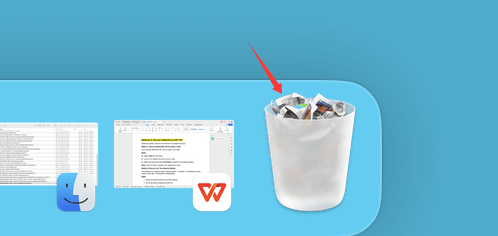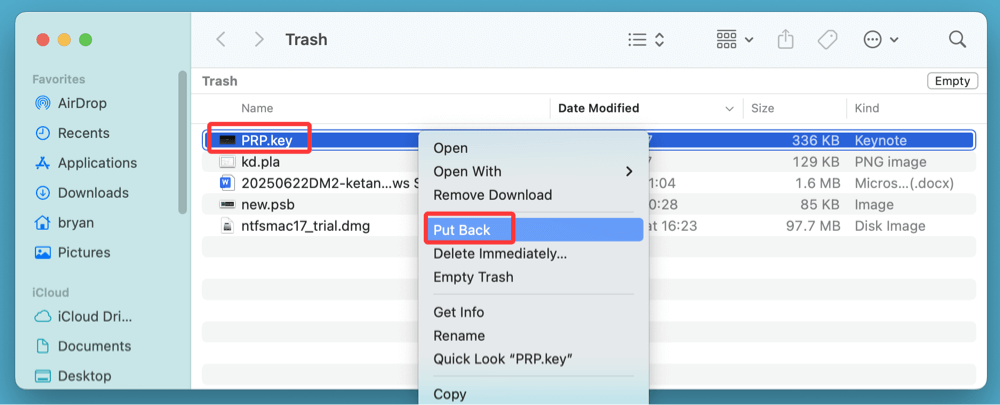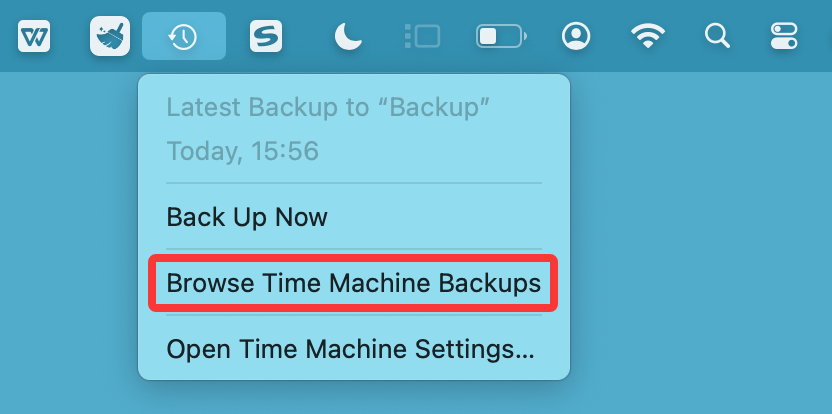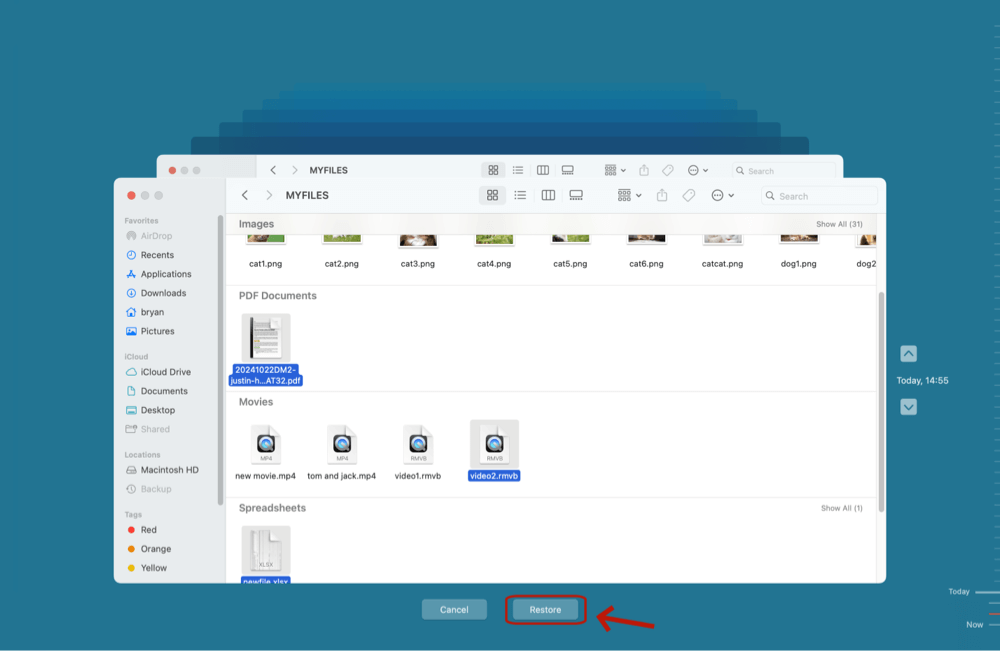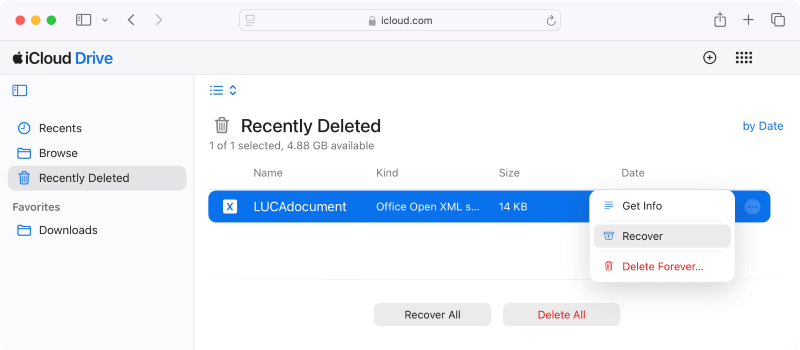Before we start: KEY files are usually created by Apple's Keynote application. If you have lost important KEY files on Mac and can't find them in trash bin, you can use data recovery software - such as Donemax Data Recovery for Mac to help get them back. This Mac data recovery software can recover permanently deleted KEY files, and recover lost KEY files from a drive which is erased by Disk Utility.
PAGE CONTENT:
KEY files are essential for users who rely on Apple's Keynote application to create engaging presentations. Whether you're a student, teacher, business professional, or designer, losing a .KEY file can be stressful - especially if it holds hours of creative or professional work. Fortunately, there are several proven methods to recover deleted KEY files.
In this guide, you'll learn what a KEY file is, the common causes of deletion, and step-by-step methods to recover your lost Keynote presentations from Mac, iCloud, backups, or using Mac data recovery software.
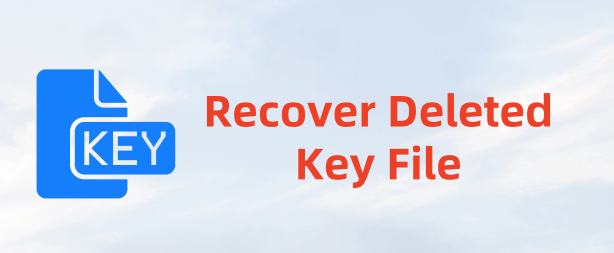
What is a KEY File?
A .KEY file is the native file format used by Apple Keynote, part of the iWork productivity suite. It is the Apple equivalent of Microsoft PowerPoint's .PPT format. These files contain slides with rich media like text, images, animations, videos, audio, and transitions.
Key features of KEY files:
- Created on macOS and iOS via Keynote.
- Saved locally or in iCloud Drive.
- Can be exported to PDF, PowerPoint, and images.
- Not natively supported on Windows (can be opened via iCloud.com).
Why a KEY File Gets Lost?
Several factors can cause a KEY file to be deleted or go missing:
- Accidental deletion: A common issue when cleaning up folders or files.
- Emptying the Trash: Permanently removing files without realizing the KEY file was among them.
- Drive formatting: Reformatting your Mac, USB, or external disk where the file was saved.
- App updates or crashes: Unexpected application shutdowns or Keynote bugs.
- iCloud sync errors: File lost due to incorrect syncing or account switch.
- Malware or corrupted storage: File system damage can result in missing files.
Understanding the cause can help determine the most effective recovery method.
Initial Steps to Take After Deleting a KEY File
As soon as you realize the file is missing:
- Stop using the Mac or drive immediately. New data may overwrite deleted file sectors, making recovery impossible.
- Check the Trash folder.
- Look into iCloud Drive's Recently Deleted folder.
- Search for backups using Time Machine.
4 Methods to Recover Deleted/Lost KEY File
Speed and caution improve your chances of successful recovery.
Method 1: Recover Deleted KEY File from Mac's Trash
If you recently deleted the KEY file, it's likely in the Trash.
Steps:
- Open Trash from the Dock.
![recover deleted KEY file]()
- Look for the deleted .key file by name or date.
- Right-click the file and select Put Back to restore it to its original location.
![recover deleted KEY file]()
💡 Note: Once the Trash is emptied, this method won't work.
Method 2: Recover Lost KEY File from Time Machine Backup
Time Machine is macOS's built-in backup feature. If enabled, it automatically saves copies of your files - including KEY presentations.
Steps:
- Connect your Time Machine backup drive to your Mac.
- Go to the folder containing the KEY file.
- Select Browse Time Machine Backups after clicking the Time Machine symbol in the navigation bar.
![recover deleted KEY file]()
- Select a date prior to the deletion.
- Select the KEY file and click Restore.
![recover deleted KEY file]()
This will recover the deleted file to its original folder.
Method 3: Recover Deleted KEY File from iCloud Drive
If your Keynote files were synced with iCloud, you may be able to recover them from the iCloud Recently Deleted folder.
Steps:
- Go to iCloud.com and sign in.
- Click iCloud Drive.
- Click the Recently Deleted section (usually at the bottom-left).
- Browse the deleted files and select the .key file.
- Click Recover.
![recover deleted KEY file]()
💡 Note: iCloud retains deleted files for 30 days after deletion.
Method 4: Use Data Recovery Software to Recover Lost KEY File
If none of the above options work, a specialized Mac data recovery tool can help restore permanently deleted files. These tools scan your disk and attempt to recover remnants of deleted files.
In this article, we will show you how to recover deleted or lost KEY files with Donemax Data Recovery for Mac, a powerful Mac data recovery application.
Step 1. Download and install Donemax Data Recovery for Mac on your Mac.
Step 2. Open Donemax Data Recovery for Mac, then select the drive which contains the deleted or lost KEY files to start data recovery.
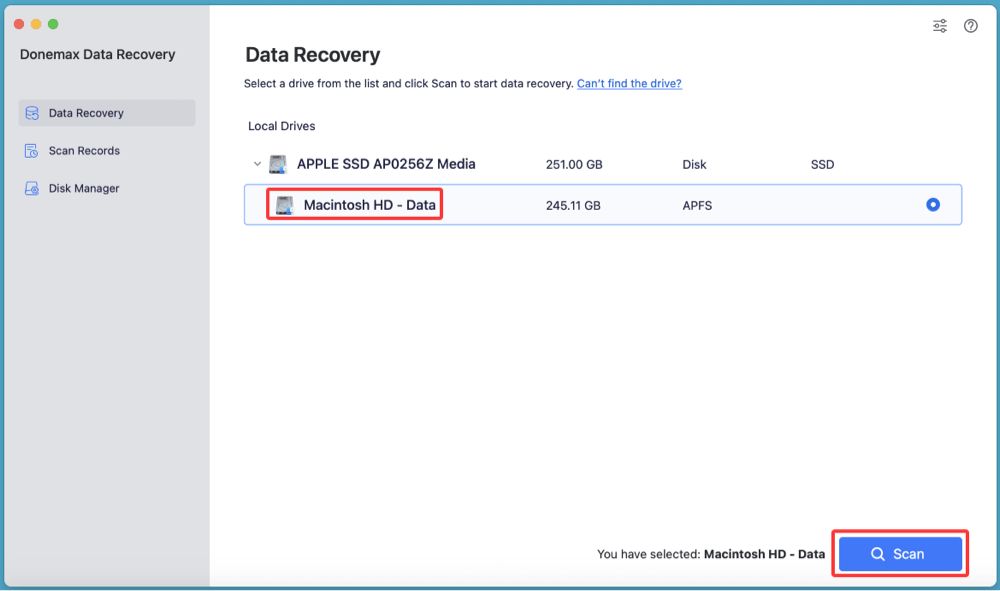
Step 3. Click on Scan button. Donemax Data Recovery for Mac is able to deeply scan the selected drive and find all recoverable files including the lost KEY files.
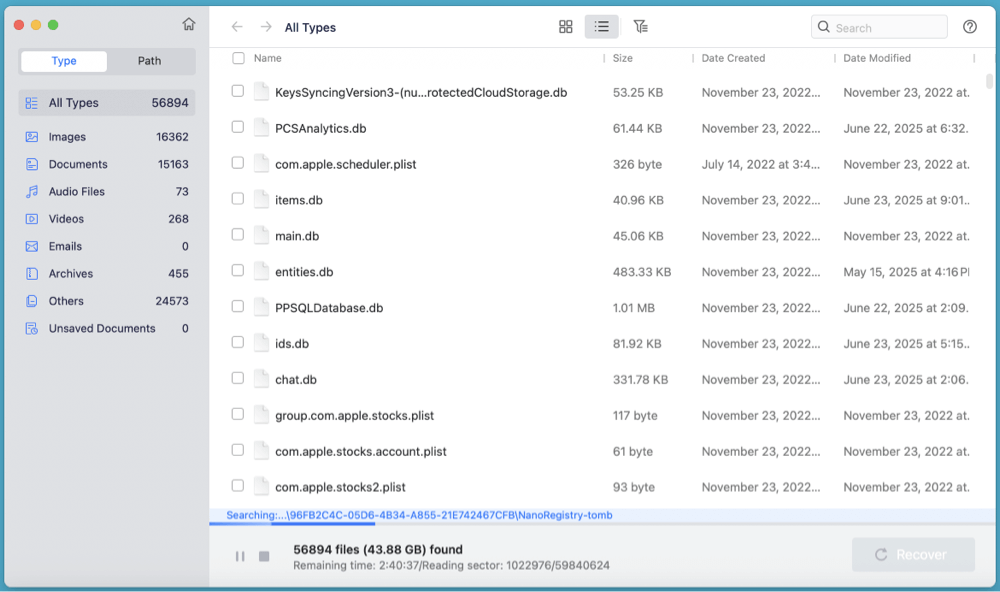
Step 4. After scanning, you can type ".key" in the filter box to search for the lost KEY file. Then select the wanted one, click on Recover button to save it to a safe location.
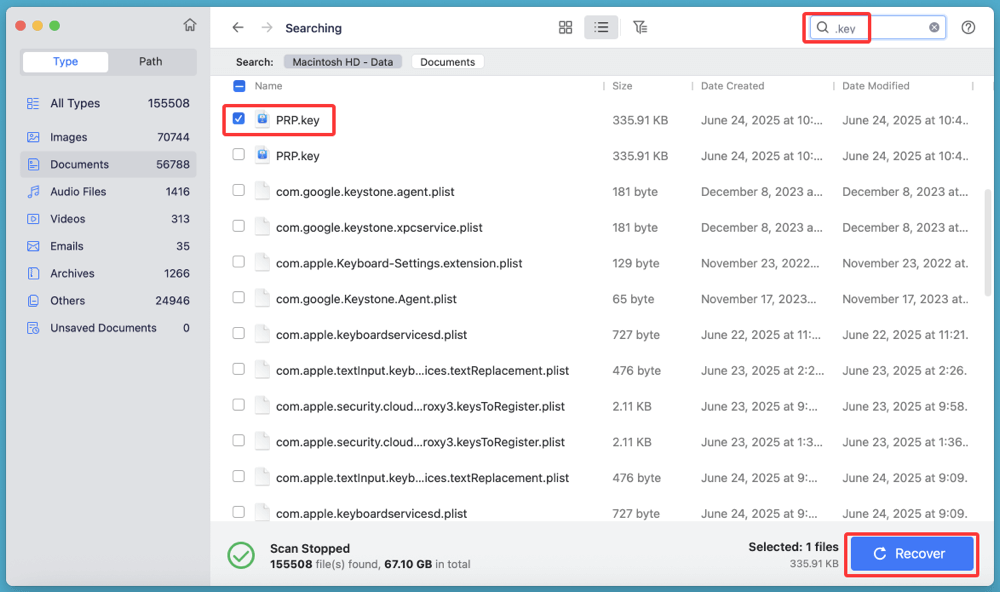
If the KEY files are stored on a corrupted volume, just choose Disk Manager. Then select the corrupted volume and click on First Aid button to repair the volume.
What If You Can't Find the File Even After Scanning?
- Try to change the Security Level in macOS Recovery mode, then run software to scan the internal SSD again.
- If the file was deleted a long time ago, chances are lower.
- Use file preview options - you may find remnants or damaged versions of the KEY file.
- At this point, consider using a professional recovery service (discussed in another section).
Pro Tips for Better Recovery Results:
- Use filters in the recovery tool to scan for just .key or "presentation" file types.
- Enable preview mode to confirm file integrity before recovery.
- Label recovered files clearly to avoid confusion later - most tools rename them with generic IDs.
By using the right data recovery software and taking immediate action, you can often retrieve your lost Keynote presentations even after they've been permanently deleted. It's one of the most powerful methods available when no backup exists - and a vital skill for any Mac user.
💡 Note: If you want to recover permanently deleted KEY files on a Windows PC, just try Donemax Data Recovery for Windows.
Can You Recover a Corrupted KEY File?
Sometimes, a KEY file isn't deleted but becomes corrupted due to power loss, interrupted saves, or system errors.
Try These Fixes:
1. Open the file on iCloud Keynote: Sometimes iCloud can open files that macOS Keynote cannot.
2. Use Keynote's autosave version:
- Open Keynote.
- Go to File > Revert To > Browse All Versions.
![recover deleted KEY file]()
- Restore an earlier, working version.
3. Repair or extract file content:
- Change the .key file extension to .zip and unzip it.
- Extract usable images or XML content from the folder.
If the file is beyond repair, data recovery software may still help if the last working version was deleted.
When to Use a Data Recovery Professional
Sometimes, home solutions aren't enough - especially when:
- The drive is physically damaged.
- SSDs with TRIM have cleared deleted sectors.
- You tried recovery tools but no file was found.
- Data is mission-critical and must be retrieved.
Professional services like:
- DriveSavers
- Ontrack
- Secure Data Recovery
These companies offer cleanroom recovery, disk imaging, and more advanced techniques that DIY tools can't replicate.
Tips to Avoid Losing KEY Files in the Future
Accidents happen, but taking the following steps can reduce your risk of permanent file loss:
1. Use Time Machine
- Back up your Mac regularly to an external drive.
- Schedule hourly/daily backups.
2. Enable iCloud Drive
- Automatically sync Keynote files to your Apple ID account.
- Deleted files stay in "Recently Deleted" for 30 days.
3. Duplicate Before Major Edits
- Use File > Duplicate to create backup versions before applying large changes.
4. Avoid Unsafe Ejects or Forced Shutdowns
- Always eject USB drives properly.
- Avoid force quitting Keynote or powering off during saves.
5. Keep Software Updated
- Ensure Keynote and macOS are regularly updated to prevent bugs and crashes.
💡 Note: If the KEY file is erased by data erasure software - such as Donemax Data Eraser for Mac, it is lost for good, can't be recovered by any method.
Conclusion
Recovering a deleted KEY file is often possible - especially if you act quickly and follow the right steps. Always begin with simple solutions like checking the Trash, iCloud Drive, or Time Machine. If that fails, powerful data recovery software (such as Donemax Data Recovery for Mac) or professionals can often retrieve your presentation.
To avoid future data loss, enable Time Machine and iCloud syncing, and keep your software and backups current.


Donemax Data Recovery for Mac
Donemax Data Recovery for Mac is one of the best Mac data recovery software. It is easy-to-use and can help in recovering deleted, formatted, inaccessible or lost data from Mac HDD/SSD, external disk, USB drive, SD card, camera or other storage devices.
Related Articles
- Sep 25, 2025Top 5 Data Recovery Software for macOS Tahoe – Complete Guide
- Mar 26, 2025How to Recover Replaced Files or Folders on Mac?
- Apr 22, 2025TestDisk Deleted / Lost Partition Recovery on Mac
- Sep 03, 2025How to Recover Deleted Chrome Bookmarks on Mac?
- Feb 12, 2025[2025 Updated] Top 4 Seagate File Recovery Solutions for Mac
- Sep 23, 2025How to Recover Lost Files After macOS Update? [macOS Tahoe Supported]

Charles
Charles, who lives in Sydney, Australia, is an editor & writer of Donemax Team. He is good at writing articles related with Apple Mac computers, Windows operating systems, data recovery, data erasure, disk clone and data backup, etc. He loves reading and playing tennis in his spare time and is interested in testing new digital devices such as mobile phones, Macs, HDDs, SSDs, digital cameras, etc.

Gerhard Chou
In order to effectively solve the problems for our customers, every article and troubleshooting solution published on our website has been strictly tested and practiced. Our editors love researching and using computers and testing software, and are willing to help computer users with their problems
